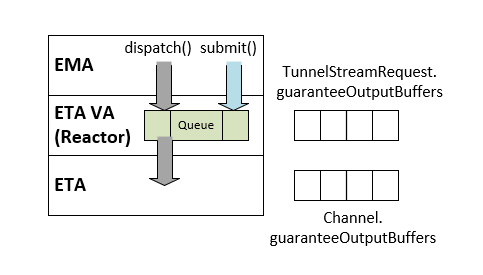Hi,
I'm testing my C++ EMA TRCC application on Linux and periodically I get the following exception while posting (via OmmConsumer::submit) messages (PostMsg):
loggerMsg
TimeStamp: 2019/03/01 04:19:50.731
ClientName: Consumer_1_1
Severity: Error
Text: Internal Error. Failed to allocate RsslTunnelStreamBuffer in TunnelItem::submitSubItemMsg( RsslMsg* ).
loggerMsgEnd
I use UserDispatch model and I suspect that due to periodical data rate spikes on my side I submit too many messages before OmmConsumer::dispatch call. I tried to increase (from 5000 to 10000) GuaranteedOutputBuffers configuration parameter but it didn't help. Is there any way to handle such memory issues?
UPDATE:
If solicitAsck mode is used for posting it seems that API doesn't free internal buffers (for messages) until it receive appropriate ACK from server (or timeout). If the server is slow in sending ACKs or Internet connection is used (network delays are possible) this might cause the growth of already sent messages waiting for ACK.
Thanks





